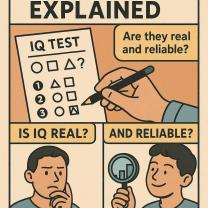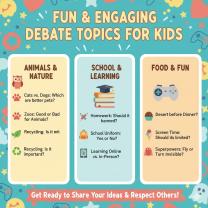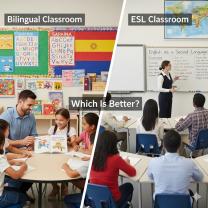What is the reading and writing program?
A reading and writing program is an organized educational initiative designed to enhance literacy skills, including reading comprehension, fluency, vocabulary, and writing proficiency. These programs are implemented in schools, educational institutions, and community organizations with the aim of improving the literacy levels of participants, which is essential for academic success and lifelong learning.
Key components and features of a reading and writing program typically include:
Curriculum: A structured curriculum that outlines the learning objectives, instructional materials, and teaching strategies for reading and writing instruction. The curriculum often aligns with educational standards and grade-level expectations.
Assessment: Regular assessment and evaluation of students' literacy skills to measure progress and identify areas that need improvement. Assessments may include reading comprehension tests, writing assignments, and fluency assessments.
Instructional Strategies: Effective teaching methods and strategies for reading and writing instruction, which may include guided reading, phonics instruction, vocabulary development, and writing workshops.
Differentiation: Tailoring instruction to meet the individual needs of students, taking into account their reading levels, learning styles, and strengths and weaknesses in literacy.
Reading Materials: Access to a diverse range of reading materials, including books, articles, stories, and digital resources. These materials should be age-appropriate and engaging to motivate students.
Writing Opportunities: Opportunities for students to practice writing skills across various genres, such as narrative, expository, persuasive, and creative writing. Writing prompts and assignments may be provided.
Teacher Training: Professional development and training for educators to ensure they are well-equipped to teach reading and writing effectively. This includes strategies for working with struggling readers and writers.
Parent and Community Involvement: Encouraging parental involvement in literacy development and fostering community support for the program's goals.
Technology Integration: Leveraging technology and digital resources to enhance reading and writing instruction. This can include access to e-books, writing software, and online resources.
Support Services: Providing additional support services for students with special needs or English language learners to ensure they receive targeted assistance.
Progress Monitoring: Regularly tracking and monitoring students' progress in reading and writing to make data-driven instructional decisions.
Literacy Culture: Creating a literacy-rich environment that promotes a love of reading and writing, such as classroom libraries, reading corners, and literacy-themed events.
Goal Setting: Setting clear literacy goals for students and motivating them to achieve these goals through recognition and rewards.
Reading and writing programs are essential for building foundational literacy skills at an early age and for continuously developing these skills throughout one's education. Such programs contribute to improved academic performance, critical thinking abilities, and communication skills, which are valuable in all aspects of life. The specific components and structure of a reading and writing program may vary depending on the educational institution and its goals, but the overarching aim is to nurture strong readers and writers.
The Reading and Writing Program: Fostering Literacy Skills
A reading and writing program is a comprehensive approach to teaching students how to read and write effectively. It should include a variety of activities and instruction to help students develop the essential literacy skills they need to succeed in school and in life.
A good reading and writing program will typically include the following components:
- Explicit instruction: Students need to be taught the specific skills and strategies they need to become successful readers and writers. This includes teaching them how to decode text, comprehend text, develop their vocabulary, and write effectively.
- Interactive reading and writing: Students should be engaged in the reading and writing process. This can be done through a variety of activities, such as asking questions, making predictions, and discussing the text with the class.
- Read-alouds: Read-alouds are a great way to expose students to high-quality literature and to model fluent reading and writing.
- Independent reading and writing: Students need time to practice reading and writing on their own. This helps them to develop their fluency and comprehension skills, as well as their writing skills.
A good reading and writing program will also be differentiated to meet the needs of all learners. Some students may need more support than others when it comes to reading and writing. Teachers should provide students with the support they need to succeed.
Comprehensive Literacy Education: The Reading and Writing Program
A reading and writing program is an essential part of a comprehensive literacy education. Literacy is the ability to read and write effectively. It is a critical skill for success in school and in life.
A comprehensive literacy education should include instruction in all four areas of reading: decoding, comprehension, fluency, and vocabulary. It should also include instruction in all four areas of writing: prewriting, drafting, revising, and editing.
A reading and writing program should also be integrated with other areas of the curriculum, such as math, science, and social studies. This helps students to see how reading and writing are relevant to their lives and to other subjects.
Empowering Students: The Importance of a Reading and Writing Program
A good reading and writing program can empower students. It can help them to develop the skills they need to communicate effectively, to learn new things, and to succeed in school and in life.
When students learn to read and write effectively, they are able to access information and ideas from all over the world. They are also able to express their own thoughts and ideas clearly and concisely.
A good reading and writing program can also help students to develop their critical thinking skills. It can help them to learn how to analyze information, to evaluate arguments, and to form their own opinions.
Overall, a reading and writing program is an essential part of a comprehensive education. It can help students to develop the skills they need to succeed in school and in life.
Here are some additional benefits of a good reading and writing program:
- Improved academic achievement: Students who participate in a good reading and writing program tend to perform better in all academic areas.
- Increased engagement: Students who are engaged in reading and writing are more likely to be engaged in school overall.
- Enhanced critical thinking skills: Reading and writing can help students to develop their critical thinking skills, which will benefit them in all areas of their lives.
- Improved communication skills: Reading and writing can help students to improve their communication skills, both verbally and in writing.
- Greater self-confidence: Students who are able to read and write effectively are more likely to feel confident in themselves and their abilities.
Overall, a good reading and writing program can have a positive impact on all aspects of a student's life.












